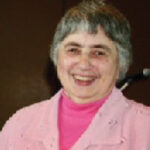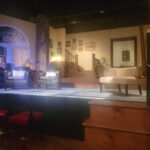Just over the border in Natick is a venue that has provided a variety of music and other entertainment options since 1997 to Natick, Wayland, and other surrounding communities.
Founded as a nonprofit institution in 1997, The Center for the Arts in Natick (TCAN) initially occupied a storefront on Natick’s main street, offering a coffeehouse atmosphere and featuring the music of local groups, student recitals, community theater productions, and art exhibitions.
The original venue was small, but its popularity grew. By 2001, TCAN’s board of directors sought to expand its operations, including an upgrade to entertainment options and a new location to accommodate larger audiences more comfortably. With the expansion of the Natick Mall during that time, the town built a new fire station, leaving the town’s existing downtown brick firehouse (built in 1875 after a major fire) available for other uses.
Despite some community resistance, and with the help of a generous benefactor and a loan, TCAN took over ownership of the old fire station and established itself in its new location. After two years of restoration, the new building reopened in 2003 as a 275-seat performance space with advanced production capabilities. The restoration enabled the TCAN to attract higher-profile artists, offer more diverse programming, and expand its audience. The organization’s board appointed David Lavalley, a TCAN volunteer, musician, and theater aficionado, as its new executive director in the following year.
Lavalley’s focus was on creating and executing a strategic plan to both expand and elevate TCAN’s entertainment offerings. Through a capital campaign and extensive fundraising efforts, he successfully developed the program offerings while retiring the organization’s debt over time. He also invested time in networking with booking agents and others in the industry to make TCAN more visible and attractive to popular artists. This approach built on itself; as more artists played at the TCAN, Lavalley’s list of use cases grew. This convinced agents and artists that TCAN was a venue where they should perform.
Like many entertainment venues, TCAN faced economic challenges during the pandemic, when it was forced to suspend all programming. The center produced livestream content and small-scale screenings aimed at both continuing to deliver high-quality content and reminding its members and the broader community of its presence.
Today, TCAN continues to operate successfully in the 19th-century firehouse it moved into over 20 years ago. Attendance has returned to pre-pandemic levels. In recent years, it has undergone several significant enhancements, including the addition of a new cinema room, a lobby renovation, upgrades to sound equipment and lighting, and the replacement of all seats in its main room. It produces over 300 events annually, including concerts, theater productions (such as those by the TCAN Players), comedy shows, educational workshops, and film screenings. Roughly 82% of its events are sold out.
Some notable artists who have appeared at the TCAN are Judy Collins, the Verve, Jake Shimabukuro, Lez Zeppelin, Haley Reinhart, Loverboy, 10,000 Maniacs, and Money. They also show weekly movies upstairs, when the smell of popcorn permeates the air, and they display and sell art from local artists in the lobby, with exhibits changing periodically.
Moving forward, TCAN’s board is developing a strategic plan to leverage its sizable yet intimate venue to attract even more renowned artists. It has committed itself to following and adapting to changing audience preferences and community needs, with a particular focus on the entertainment priorities of younger audiences.
To David Lavalley, success is not only measured by financial solvency, but also by the several other communities that look to TCAN as a model for providing local entertainment, and the synergy TCAN has established with other local businesses that benefit from TCAN’s presence and success. To him, TCAN’s “north star” is its ability to provide a “small space but big experience.”















